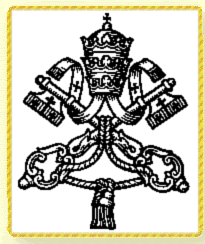 RAFAEL GUÍZAR VALENCIA was born in Cotija, Michoacan in the diocese of Zamora on April 26th 1878. His parents, Prudencio and Natividad were devout Christians who gave their 11 children a careful religious upbringing.
RAFAEL GUÍZAR VALENCIA was born in Cotija, Michoacan in the diocese of Zamora on April 26th 1878. His parents, Prudencio and Natividad were devout Christians who gave their 11 children a careful religious upbringing.Blessed Rafael lost his mother at the age of nine. He spent his early years studying in a religious school and then spent time with Jesuit priests. His calling in life was to enter the priesthood thereby dedicating his life in the name of Good. In 1891 he entered the minor seminary in Cotija and, then in 1896, he entered the major seminary in Zamora. In June of 1901, at the age of 23, he was ordained to the priesthood.
In his early years as a priest, he devoted a large part of his time doing missionary work in the city of Zamora and in various different regions of Mexico. In 1905 he was named spiritual director of the seminary in Zamora. He worked tirelessly to educate students in the love of the Holy Eucharist and faithful devotion to the Virgin Mary.
In 1911, to counteract the persecution of the Catholic Church, he founded a religious newspaper in Mexico, but shortly thereafter it was unfortunately put out of business by the revolutionary movement. Persecuted until his death, he lived a number of years with no fixed home. He suffered loss of privacy and faced many dangerous experiences. To continue his ministry, he disguised himself as a street seller, a musician, and a doctor of homeopathic medicine. In this way, he was able to heal the sick, continue to console and administer the sacraments to the dying.
Untiring missionary
He was pursued by his enemies and was unable to remain permanently in placecountry-region Mexico due to the constant danger of being captured. He remained in the southern part of the United States until the end of 1915. The year after, he went to Guatemala where he conducted a large number of missions. His reputation as a missionary reached Cuba where he was later invited to conduct missions for the people. His work was very productive on the island. His charitable work with the victims of the black plague in 1919 was exemplary.
Bishop of Veracruz
On August1, 1919, while in placecountry-region Cuba he was elected Bishop of Veracruz. His consecration took place in the Cathedral of Havana on November 30, 1919. He took possession of his diocese on January 9, 1920. He dedicated his first two years to visiting personally the vast territory of his diocese. He conducted missions and later assisted those affected by a terrible earthquake, which caused mass destruction and death among the poor of Veracruz. His work included preaching in parish churches, teaching doctrine, validating marriages, spending time listening to confessions and helping earthquake victims.
His Episcopal mission. New persecutions
One of his main preoccupations was the education of future priests. In 1921 he was able to save and renovate the old seminary of Xalapa, which was confiscated in 1914. Once again, however, the government seized the building shortly after its renovation. He then moved the seminary to Mexico City where it continued to function clandestinely for 15 years. It was the only seminary that remained open during these years of persecution. There were 300 seminary students.
Of the years in which he was in charge of the diocese, 9 years were spent in exile or fleeing for his life. An exemplary act of bravery came when he wanted to give himself up to his persecutors in return for the freedom of worship.
His death
In December 1937, while on a mission in Cordoba, he suffered a heart attack and spent the rest of his days bedridden. From his deathbed he managed the diocese and the seminary while he prepared his soul to meet Almighty God. He also celebrated mass everyday.
He died on June 6, 1938 in Mexico City. The next day he was laid to rest in Xalapa. The funeral procession was a triumphant event: everyone wanted to have a last look at “the Saintly Bishop Guízar”. On January 29, 1995 he was beatified by Pope John Paul II in the Vatican Basilica of Saint Peter. This past April 28, 2006, Pope Benedict XVI signed the decree on the miracle thus paving the way for his canonization. His tomb in the Catholic Cathedral of Xalapa attracts thousands of worshipers who come to ask for his help and intercession.
Bio and image from the Congregation for the Causes of the Saints










No comments:
Post a Comment